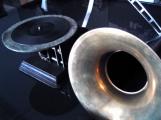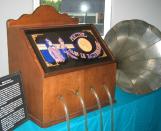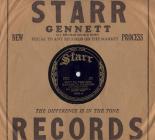2
Recording and sound reproduction techniques have evolved along multiple tracks. Here are a few grooves to be pressed into our sound memory.4
In 1887 in Europe, Emile Berliner patented a gramophone that used his process, by means of which cylinders were replaced by records. In 1899, he established himself in Montreal in order to escape competition from Edison; Edison (cylinders), Columbia (cylinders and records) and Berliner (records) competed for the North American market.6
Recording studio before the electric age1914
Montreal, Quebec, Canada
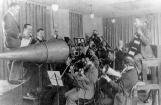 Credits:
Credits:Archives nationales du Québec collection
7
Acoustic recording was the first widespread procedure developed for keeping sound in memory, thanks to a large bell that captured the waves analogically and then cut them in grooves.The arrival of electrical recording in 1924 improved the frequency spectrum and recording quality.
8
Sophisticated design characterizes this Victrola, used for listening to the records of the day.1928
Montreal, Quebec, Canada

9
Record sleeve from 'La diva et le vinyle' by Martin Tétreault and Robert M. Lepage.1997
Montreal, Quebec, Canada

11
Fairs, arcades and public places often featured coin-operated "Nickel-in-the-Slot" phonographs. In French, these devices were called "bastringues," a word that also refers to a dance (as in a song by La Bolduc) or to a ballroom. Here we see a reconstruction of this ancestor to the Juke-Box.13
Records have not always rotated at the same speed. Many record enthusiasts are familiar with 33 1/3 and 45 rpm records, while the older generation listened to 78s and even 16 rpms (a format that allowed longer play than the 78, but did not last long on the market).14
Technician at work in M. Pound's studio1938
Montreal, Quebec, Canada
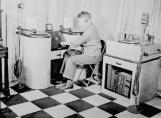 Credits:
Credits:Archives nationales du Québec collection


